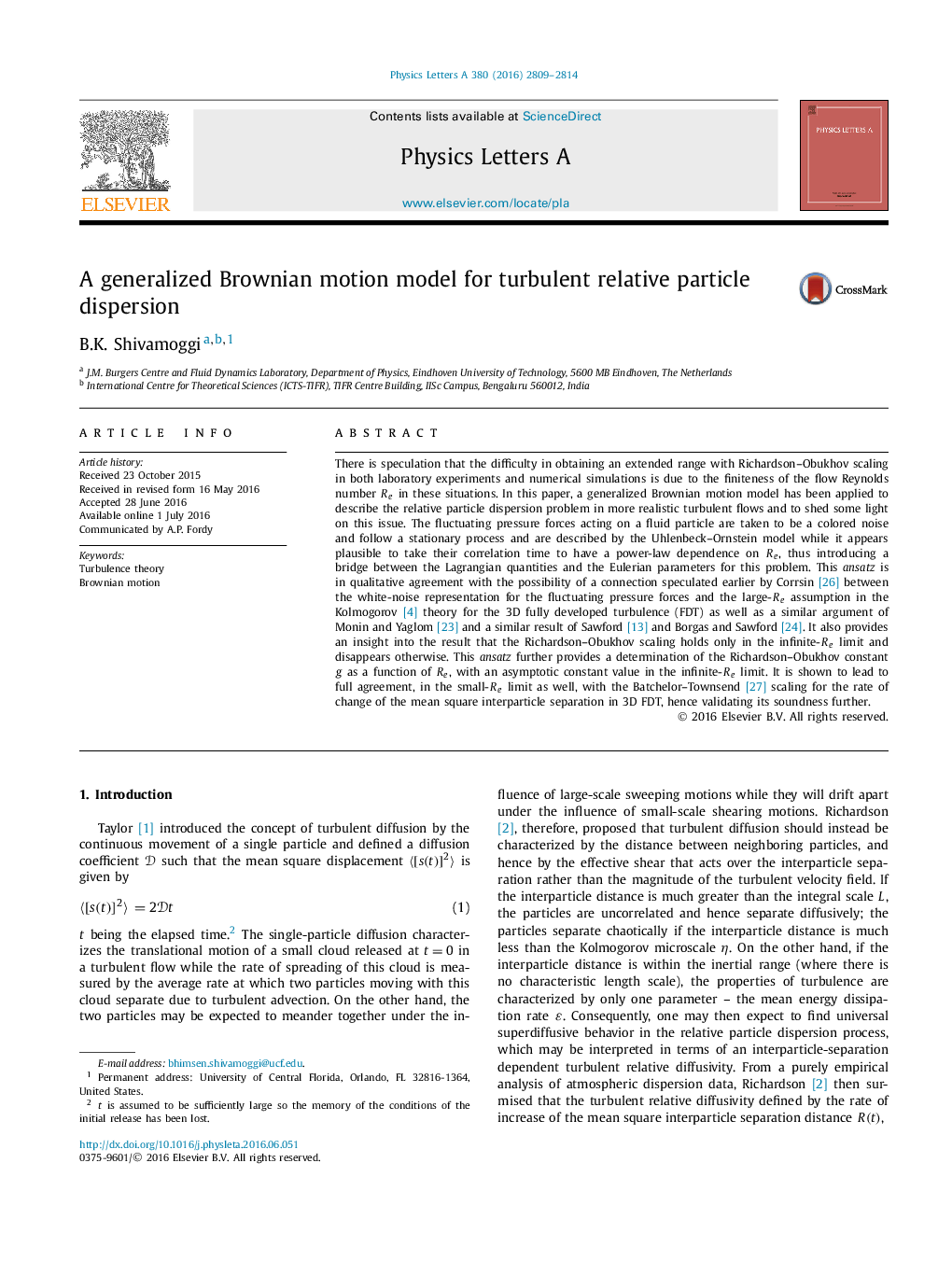| Article ID | Journal | Published Year | Pages | File Type |
|---|---|---|---|---|
| 1858872 | Physics Letters A | 2016 | 6 Pages |
•A generalized Brownian motion model has been applied to describe the relative particle dispersion problem in more realistic turbulent flows.•The fluctuating pressure forces acting on a fluid particle are taken to be a colored noise while it appears plausible to take their correlation time to have a power-law dependence on ReRe.•This introduces a bridge between the Lagrangian quantities and the Eulerian parameters for this problem.
There is speculation that the difficulty in obtaining an extended range with Richardson–Obukhov scaling in both laboratory experiments and numerical simulations is due to the finiteness of the flow Reynolds number ReRe in these situations. In this paper, a generalized Brownian motion model has been applied to describe the relative particle dispersion problem in more realistic turbulent flows and to shed some light on this issue. The fluctuating pressure forces acting on a fluid particle are taken to be a colored noise and follow a stationary process and are described by the Uhlenbeck–Ornstein model while it appears plausible to take their correlation time to have a power-law dependence on ReRe, thus introducing a bridge between the Lagrangian quantities and the Eulerian parameters for this problem. This ansatz is in qualitative agreement with the possibility of a connection speculated earlier by Corrsin [26] between the white-noise representation for the fluctuating pressure forces and the large-ReRe assumption in the Kolmogorov [4] theory for the 3D fully developed turbulence (FDT) as well as a similar argument of Monin and Yaglom [23] and a similar result of Sawford [13] and Borgas and Sawford [24]. It also provides an insight into the result that the Richardson–Obukhov scaling holds only in the infinite-ReRe limit and disappears otherwise. This ansatz further provides a determination of the Richardson–Obukhov constant g as a function of ReRe, with an asymptotic constant value in the infinite-ReRe limit. It is shown to lead to full agreement, in the small-ReRe limit as well, with the Batchelor–Townsend [27] scaling for the rate of change of the mean square interparticle separation in 3D FDT, hence validating its soundness further.
